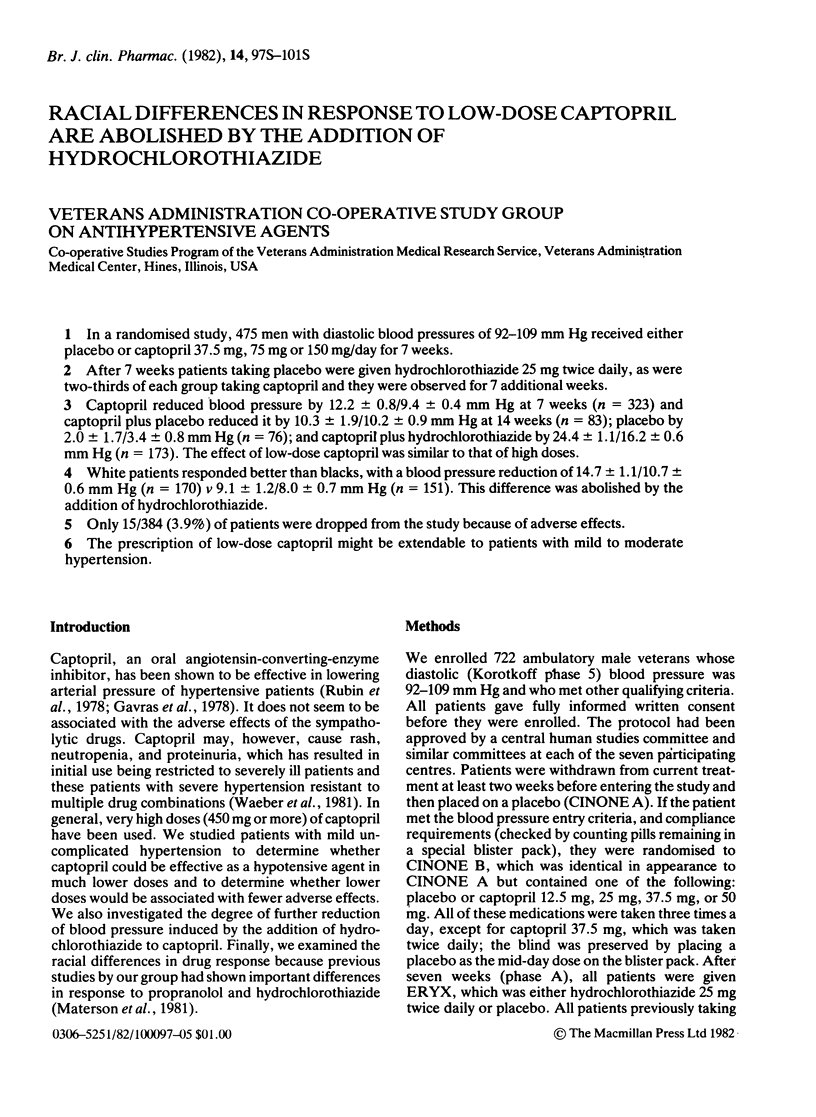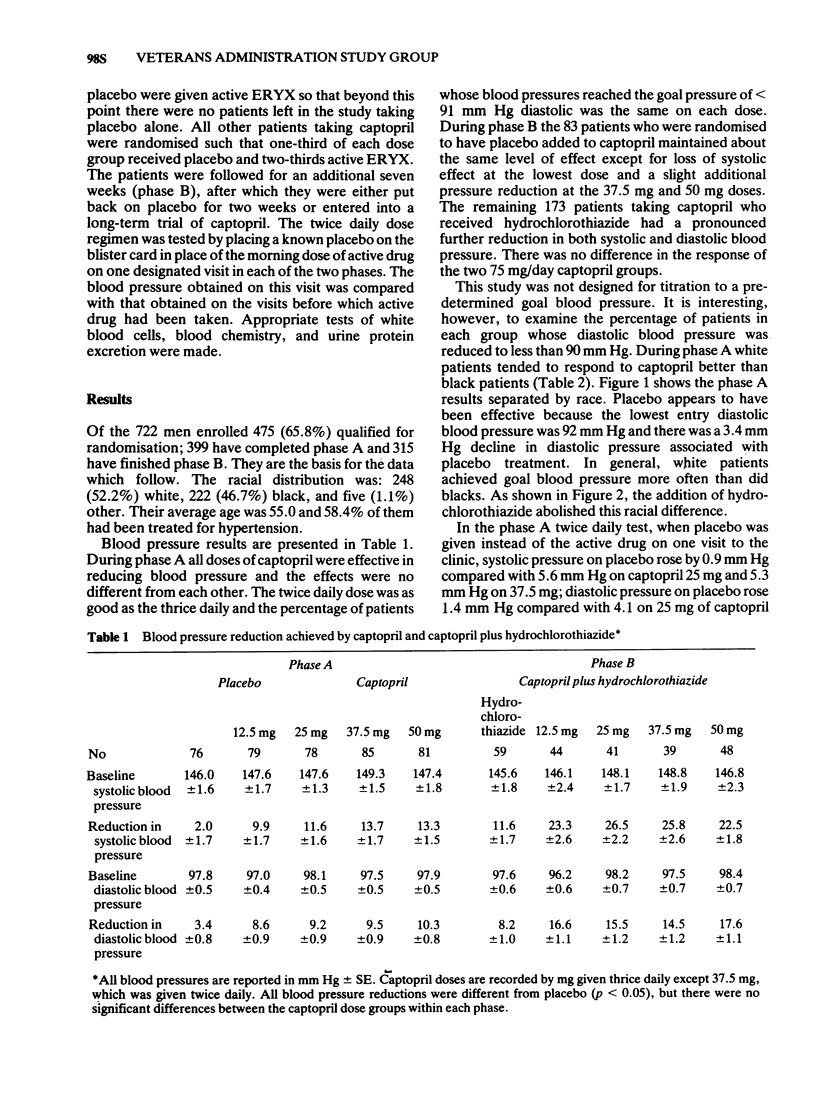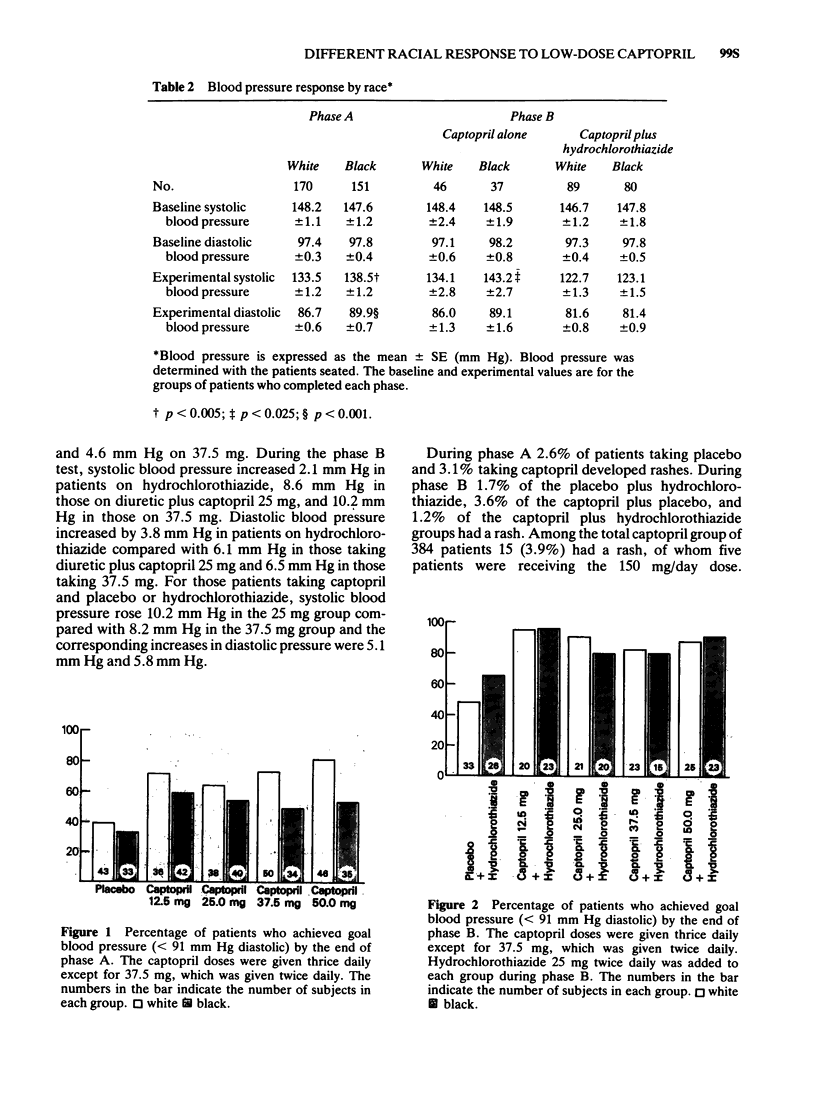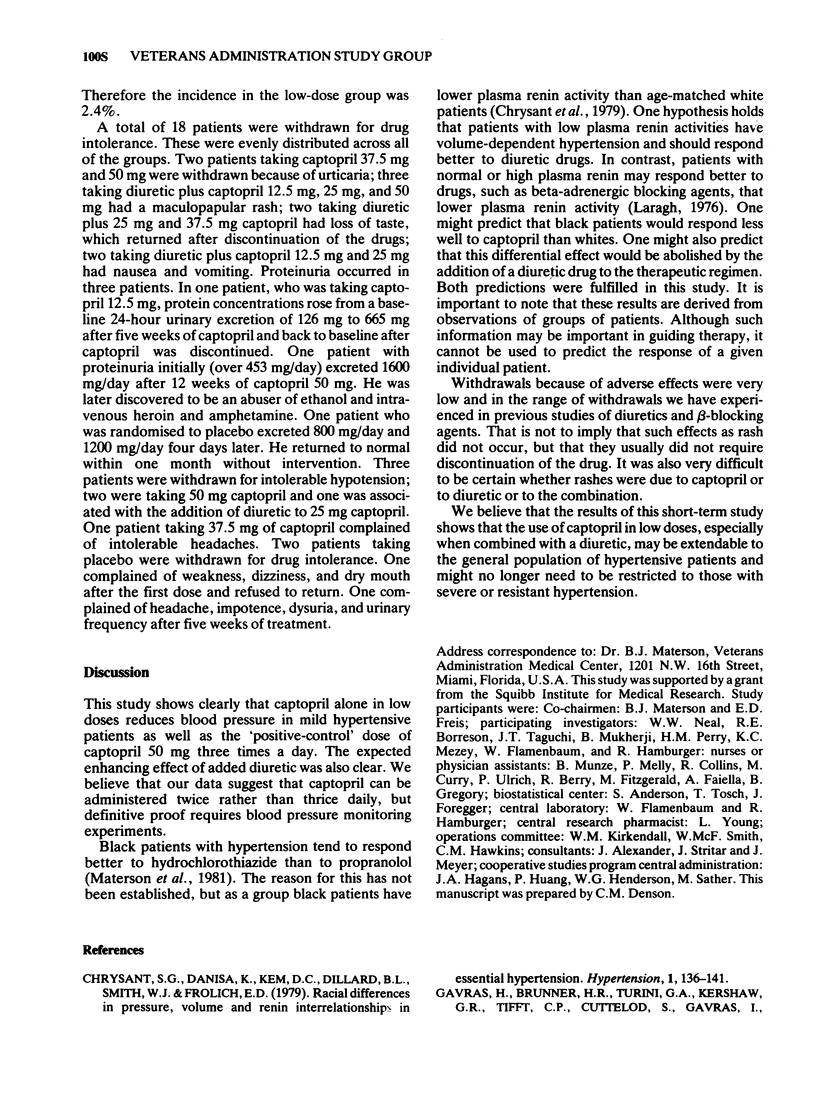Abstract
1 In a randomised study, 475 men with diastolic blood pressures of 92-109 mm Hg received either placebo or captopril 37.5 mg, 75 mg or 150 mg/day for 7 weeks.
2 After 7 weeks patients taking placebo were given hydrochlorothiazide 25 mg twice daily, as were two-thirds of each group taking captopril and they were observed for 7 additional weeks.
3 Captopril reduced blood pressure by 12.2 ± 0.8/9.4 ± 0.4 mm Hg at 7 weeks (n = 323) and captopril plus placebo reduced it by 10.3 ± 1.9/10.2 ± 0.9 mm Hg at 14 weeks (n = 83); placebo by 2.0 ± 1.7/3.4 ± 0.8 mm Hg (n = 76); and captopril plus hydrochlorothiazide by 24.4 ± 1.1/16.2 ± 0.6 mm Hg (n = 173). The effect of low-dose captopril was similar to that of high doses.
4 White patients responded better than blacks, with a blood pressure reduction of 14.7 ± 1.1/10.7 ± 0.6 mm Hg (n = 170) v 9.1 ± 1.2/8.0 ± 0.7 mm Hg (n = 151). This difference was abolished by the addition of hydrochlorothiazide.
5 Only 15/384 (3.9%) of patients were dropped from the study because of adverse effects.
6 The prescription of low-dose captopril might be extendable to patients with mild to moderate hypertension.
Full text
PDF




Selected References
These references are in PubMed. This may not be the complete list of references from this article.
- Chrysant S. G., Danisa K., Kem D. C., Dillard B. L., Smith W. J., Frohlich E. D. Racial differences in pressure, volume and renin interrelationships in essential hypertension. Hypertension. 1979 Mar-Apr;1(2):136–141. doi: 10.1161/01.hyp.1.2.136. [DOI] [PubMed] [Google Scholar]
- Gavras H., Brunner H. R., Turini G. A., Kershaw G. R., Tifft C. P., Cuttelod S., Gavras I., Vukovich R. A., McKinstry D. N. Antihypertensive effect of the oral angiotensin converting-enzyme inhibitor SQ 14225 in man. N Engl J Med. 1978 May 4;298(18):991–995. doi: 10.1056/NEJM197805042981803. [DOI] [PubMed] [Google Scholar]
- Laragh J. H. Modern system for treating high blood pressure based on renin profiling and vasoconstriction-volume analysis: a primary role for beta blocking drugs such as propranolol. Am J Med. 1976 Nov;61(5):797–810. doi: 10.1016/0002-9343(76)90161-3. [DOI] [PubMed] [Google Scholar]
- Rubin B., Antonaccio M. J., Horovitz Z. P. Captopril (SQ 14,225) (D-3-mercapto-2-methylpropranoyl-L-proline): a novel orally active inhibitor of angiotensin-converting enzyme and antihypertensive agent. Prog Cardiovasc Dis. 1978 Nov-Dec;21(3):183–194. doi: 10.1016/0033-0620(78)90024-5. [DOI] [PubMed] [Google Scholar]
- Waeber B., Gavras I., Brunner H. R., Gavras H. Safety and efficacy of chronic therapy with captopril in hypertensive patients: an update. J Clin Pharmacol. 1981 Nov-Dec;21(11-12):508–516. doi: 10.1002/j.1552-4604.1981.tb05658.x. [DOI] [PubMed] [Google Scholar]


